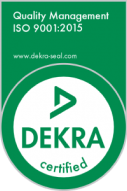In the EDUCAUSE Top 10 IT (INFORMATION TECHNOLOGY) Issues for 2022, one leader stated, “I believe that we have the opportunity to reconceptualize how it is that we are no longer going to be in front of the classroom but, instead, we’re going to be facilitators of knowledge.“ 1
As your organization considers how to facilitate knowledge, I draw your attention to the article’s Point #5, “The Digital versus Brick-and-Mortar Balancing Game: Creating a blended campus to provide digital and physical work and learning spaces.”
The traditional classroom learning model is in flux. Administrators, facilitators, and students are all looking for more efficient and accommodating ways to transfer information. Classroom schedules are becoming less rigid as online and on-demand resources are emerging.
There will be a lot of trial and error as innovative thinkers try to create a balance between the digital and the physical learning spaces. Some ideas will work better than others. It will be a tremendous demand for both the technical and functional resources.
As always, we consider the cost. When innovative technology delivers on expectations, it is well worth the investment. But, too often, the technology is too new and does not deliver exactly as hoped and budget resources are wasted.
While businesses may have some of the same challenges as education, businesses innovate using a different acquisition model. Many businesses have gone to a “as a Service” for their technology. Instead of capital expenditure purchases (CapEx) for depreciating assets, businesses are opting for monthly service fee (OpEx) for innovative technology. As with most software licenses, institutions pay a monthly fee for equipment, Installation, warranty, and ongoing support. As technology changes, they simply roll out the old technology and replace it with new without the need for additional CapEx.
Higher Education can benefit from this model, too. Instead of making large acquisitions for depreciating technology like audio visual and classroom education technology, many institutions are moving to “Audio Visual as a Service” (AVaaS).
AV as a Service:
- Provides budget predictability – no unforeseen costs
- Allows flexibility to scale up or down as needs change
- Makes it possible to standardize AV systems while taking advantage of manufacturer volume discounts
- Frees up IT resources with centralized systems monitoring to enable focus on other strategic initiatives
- Provides the benefit of an ongoing, consistent, reliable AV technology partnership with industry professionals
As you think about how you will create the perfect blend of the physical and the digital for your organization, consider AV as a Service. If you want some ideas on how it might work best for your organization, we can help.
Columbia Advisory Group offers design, procurement, Logistics, installation, configuration, financing, and maintenance as a Service over 36- and 60-month periods.
1. Susan Grajek and the 2021–2022 EDUCAUSE IT Issues Panel, “Top 10 IT Issues, 2022: The Higher Education We Deserve,” EDUCAUSE Articles, November 1, 2021.


